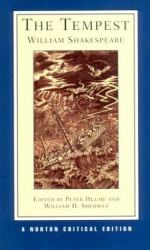|
This section contains 6,541 words (approx. 17 pages at 400 words per page) |

|
Source: "The Ordering of The Tempest," in Wasca na Review, Vol. 10, No.1, Spring, 1977, pp. 3-20.
[In the following essay, Weber outlines the "elaborate and symmetrical structure" of The Tempest, contending that characters, both in groups and as individuals, are contrasted with one another in order to dramatize Shakespeare's theme of civilization's effects on human beings. In this scheme, Weber explains, Ariel and Caliban represent aspects of human behavior outside the bounds of civilized society. They are in turn compared to the human characters in the play who represent the virtues and Vices of civilized man. Thus, Prospero personifies intellectual Virtue; Sebastian and Antonio intellectual evil; Gonzago embodies emotional goodness; Stephano and Trinculo demonstrate emotional vice. These symmetries are likewise played out in the drama's minor characters, including Miranda and Ferdinand, who represent potential for good among the young in society.]
Friends and foes of The Tempest agree...
|
This section contains 6,541 words (approx. 17 pages at 400 words per page) |

|




